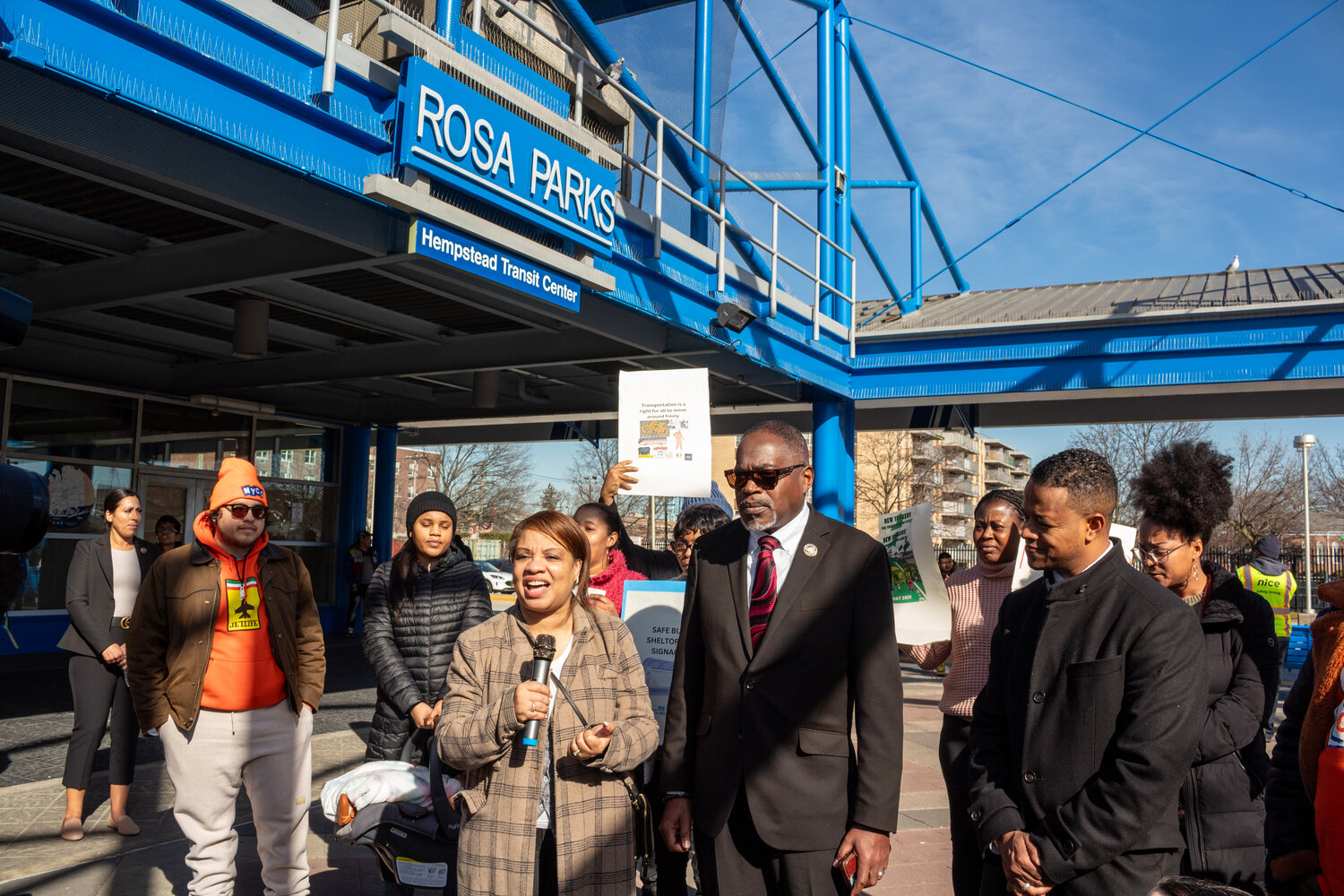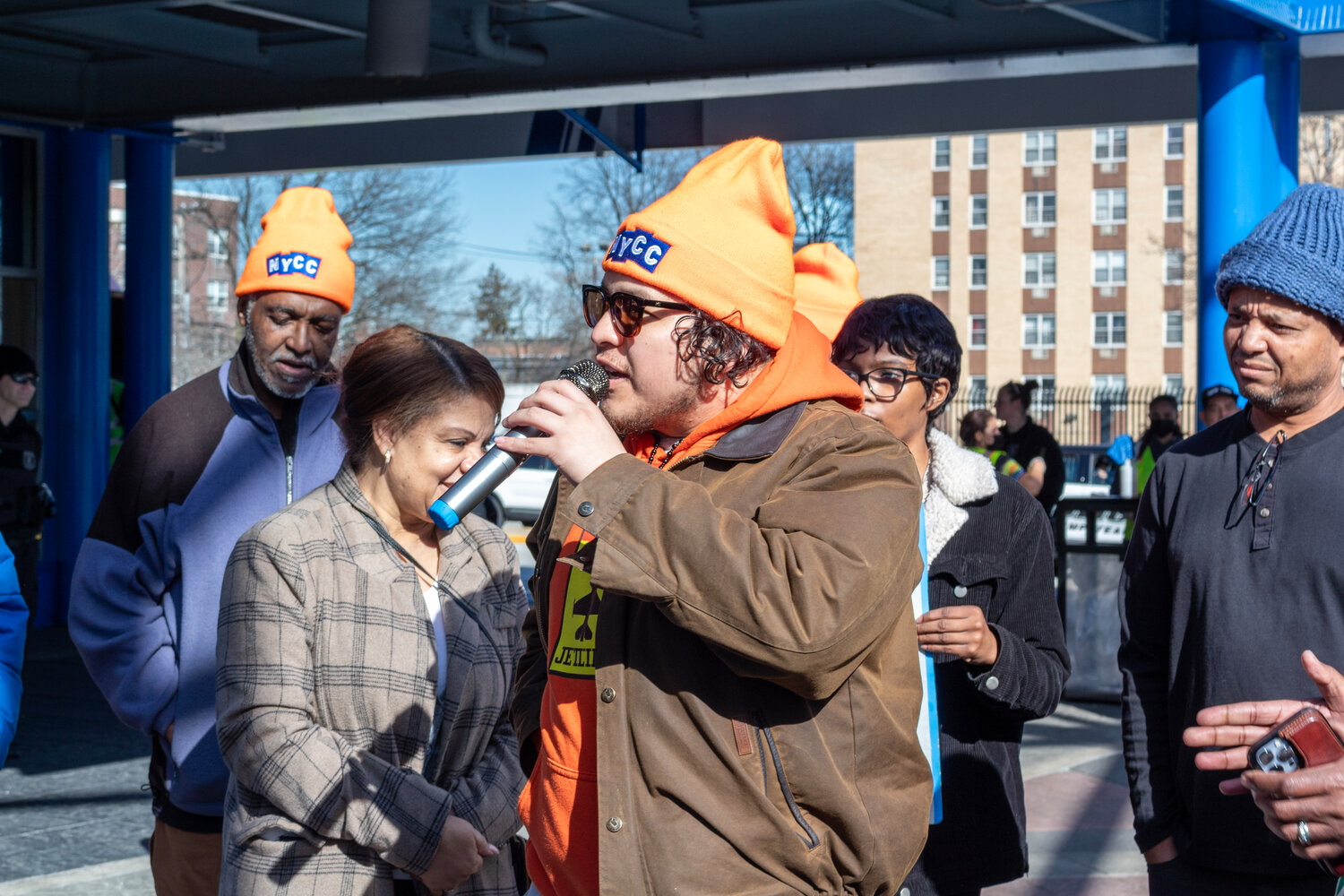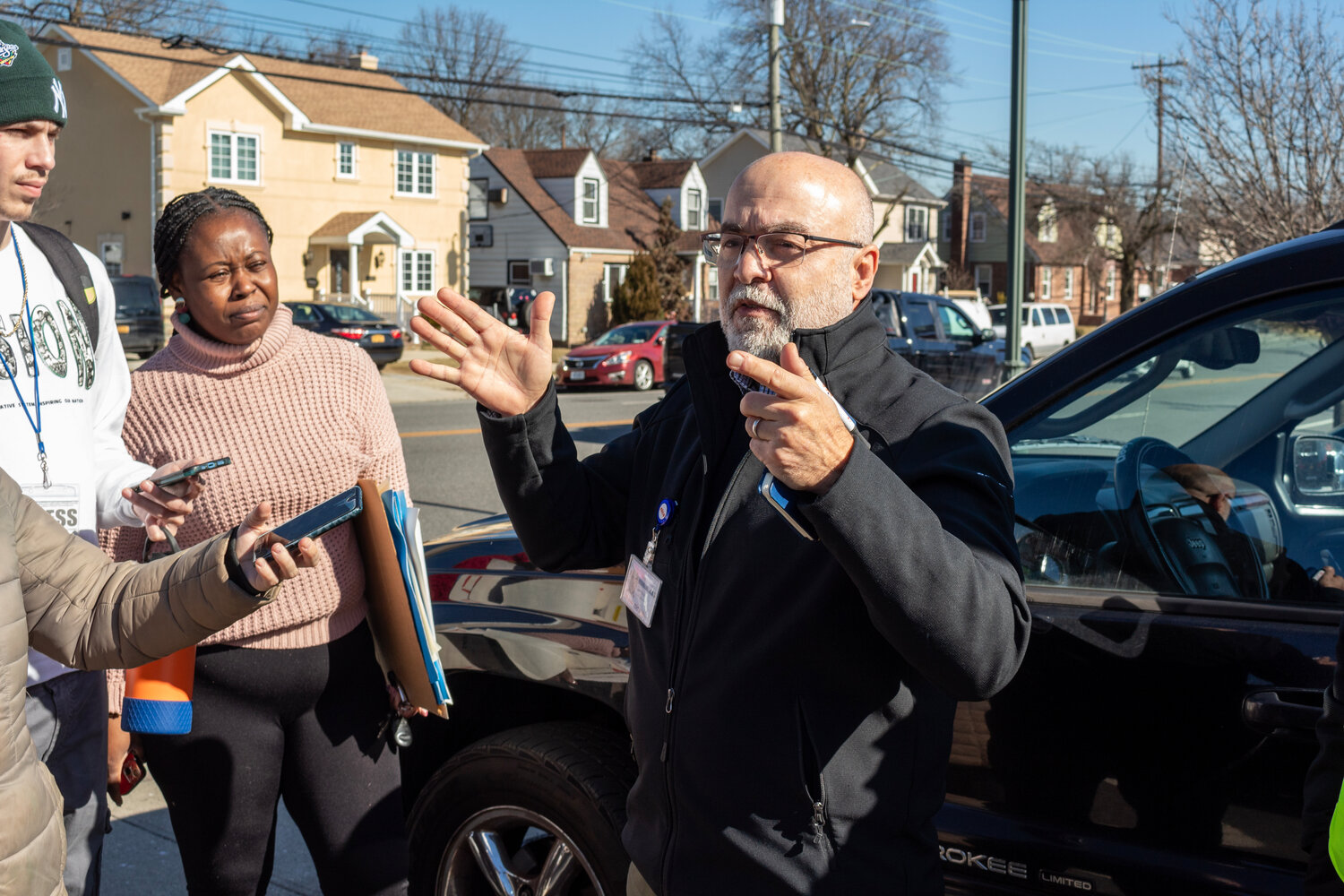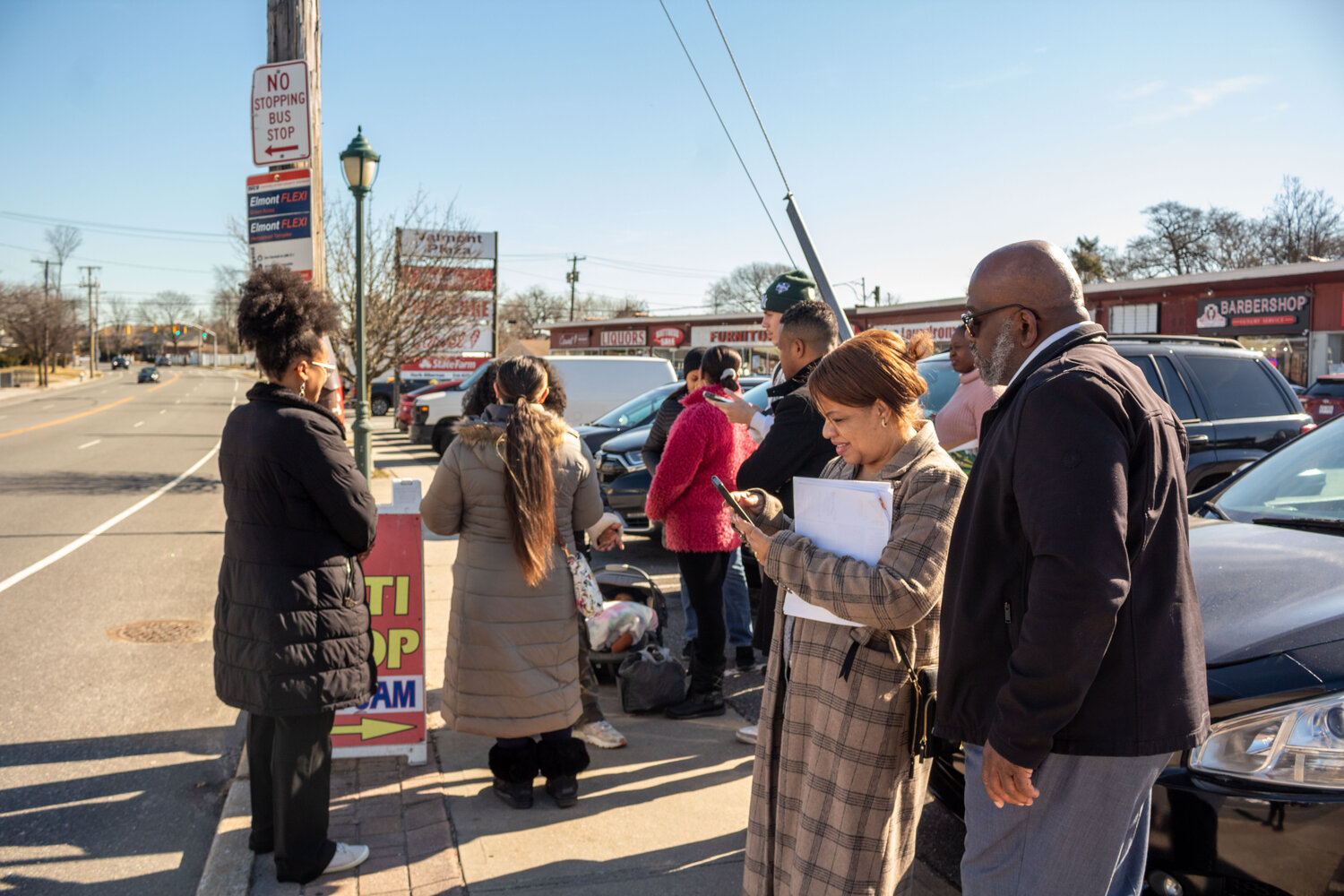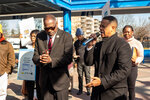Nassau's public transportation riders demand transit equity
Riders from Uniondale, Roosevelt, Hempstead, and Elmont stage bus rally and protest
Public transit users from Uniondale, Roosevelt, Hempstead and Elmont united for a bus rally on Feb. 4 in honor of both Rosa Parks’ birthday and Transit Equity Day, to demand exactly that: an equitable distribution of funding and resources to the county’s public transportation system.
Organizers from the Elmont Cultural Center and New York Communities for Change organized the ride-along and rally, planning to take protesters from a bus stop in Elmont to the Rosa Parks Hempstead Transit Center in order to show those who were unfamiliar with Nassau Inter-County Express bus service how long it takes to get from one place to another, and the inconvenience and stress involved.
But because NICE buses were not operating at the Elmont stop — at Russell Avenue and Dutch Broadway — protesters were delayed in getting to the transit center. ECC organizer Mimi Pierre-Johnson, who helped stage the rally, said this was a perfect example of just one inconvenience that everyday riders face.
“We want to bring attention to the inequalities in transportation on Long Island,” Pierre-Johnson said. “We’re fighting for more services, more funding, and more equity in our communities.”
Organizers also made clear that “equity” includes fair pay for NICE’s bus drivers.
Among those who attended the ride-along and rally was County Legislator Carrié Solages, who noted that the high property taxes residents pay often don’t find their way back to many communities equitably.
“Our priority should be to have more access to transportation in all areas of our community, especially the areas where we’re paying a lot of property taxes,” Solages said. “The cost of living here is just unsustainable, unrealistic and, really, it’s about the rich versus the poor. This is an economic issue that has a disproportionate impact on minority communities.”
According to NICE’s Fare Equity Analysis draft from June 2023, over 88 percent of the system’s riders identify as a race other than white, with Hispanic patrons at 41 percent and Black riders at 37 percent — a stark contrast to the general population of Nassau County, which is almost 60 percent white, according to Data USA.
NICE’s chief executive officer, Jack Khzouz, stopped by the starting point of the rally to address the protesters and answer their questions — and also provided them with the bus they needed to get to and from the transit center.
Beyond the issues riders have with bus schedules and transit times, the ECC demanded that NICE address problems with accessibility, create better infrastructure for bus stops that includes benches and shelter from the elements, and focus on issues of connectivity, such as the “last mile” problem, a common one, riders say: A bus will them only so far, and they have to figure out how to negotiate the last mile of their trip.
Some riders said they felt that Khzouz’s answers weren’t satisfactory. He said that NICE’s funding is “stable,” meaning the agency doesn’t have the budget to meet additional demands, but is working toward “increasing the frequency of available buses.” Khzouz added that NICE is currently implementing the county’s plan to upgrade some bus stop infrastructure in the next five years, but currently does not have the funds to address the connectivity issues.
“This is why I have an issue with a private company doing a public service,” Solages said at the rally. “Even though we fund (NICE), they get to determine their budget according to their system that is based on profit — not the convenience of everyday commuters.”
In 2011, Nassau County severed ties with the Metropolitan Transportation Authority and contracted a private corporation, Veolia, to take over, and operate, what is now known as NICE.
Once protesters arrived in Hempstead, they were greeted by Hempstead Mayor Waylyn Hobbs, and more demonstrators from NYCC who were waiting with signs and bullhorns, chanting, “Fair, fair, fair, fair, you shouldn’t have a hard time getting here.”
“Taking the bus here is an adventure,” said Darinel Velasquez, a rally organizer. He added that when he has to take the bus, his commute is about an hour — on a good day — compared with 15 minutes when he has access to a car.
If bus service were adequate, Velasquez said, he would prefer public transportation to driving. “CO2 emissions from vehicles are insane,” he said, “but with buses, it’s a more communal way to go around, and you’re saving resources not just for the public, but for the planet.”

